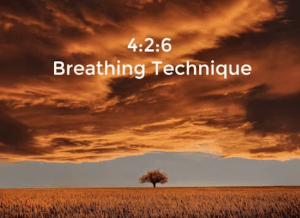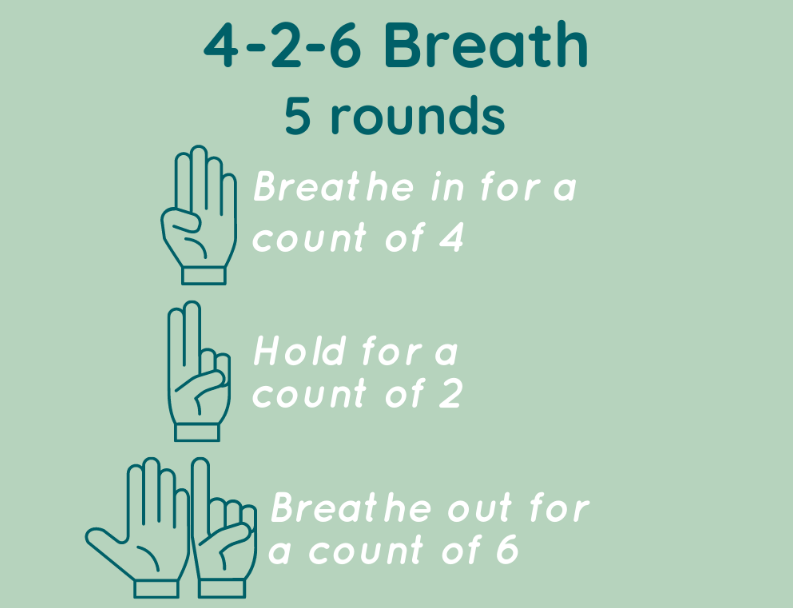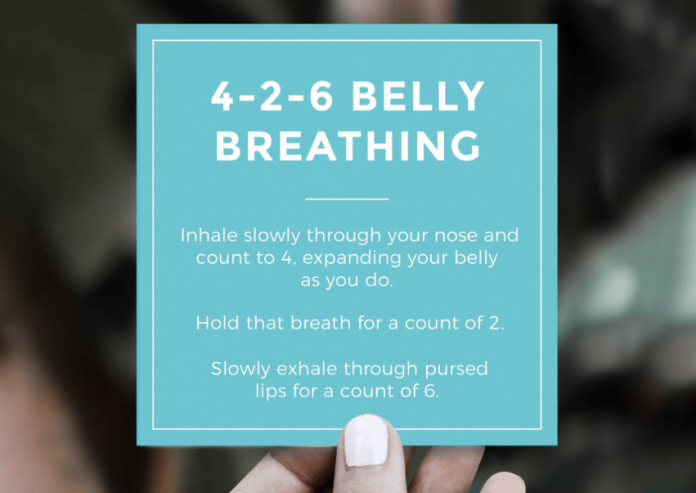4-2-6 Breathing: Decrease Stress with Your Breath
Stress and anxiety can sometimes take over, disrupting our lives and affecting our physical and mental well-being. Chronic stress can alter our nervous system, making it difficult to process stress healthily. This often triggers the fight-or-flight response, which prevents clear and rational thinking. One of the most effective ways to manage stress and shift out of this response is through breathwork. It’s simple, easy to do, and can be practiced anywhere. One particularly effective and simple technique is called 4-2-6 breathing.

When we experience high stress levels, our sympathetic nervous system takes over. This system prepares the body for a perceived threat, which is useful if you’re in danger but not so much when facing work deadlines. The body reacts the same way to any perceived threat: digestion stops, heart rate increases, blood flows to the limbs, pupils dilate, and cortisol levels rise. While this response can save your life in emergencies, chronic activation is detrimental to your health. The goal is to shift from the sympathetic system to the parasympathetic system.
The parasympathetic system is responsible for “rest and digest.” It calms bodily functions, resumes digestion, and slows the heart rate. Using your breath is one of the most effective ways to activate this system. Studies show that diaphragmatic breathing not only calms the brain but also activates the vagus nerve, which is crucial for triggering the parasympathetic response.
How to Practice 4-2-6 Breathing

- Get Comfortable: Place one hand on your chest and the other on your belly.
- Focus on Your Breath: Inhale deeply without moving your chest, focusing on breathing from deep within your core. Your belly should move in and out.
- Breathe In: Inhale through your nose for a count of 4 seconds.
- Hold: Hold your breath for 2 seconds.
- Exhale: Slowly exhale through your mouth for a count of 6 seconds, relaxing your mouth and jaw and letting go of all tension.
Practice Tips
- Duration: Practice for at least 5-10 minutes, 1-2 times a day.
- During Stress: When stressed, this technique retrains your brain and nervous system to remain calm and handle challenges rationally.
- Regular Practice: Even when not stressed, regular practice helps decrease overall stress levels and train your nervous system away from the sympathetic response.
- Before Bed: Practicing before sleep can help you unwind and focus your mind, promoting relaxation and better sleep.
Commit to practicing 4-2-6 breathing regularly for a few weeks and notice the difference it makes. Managing stress improves your quality of life, peace of mind, rest, and immune system. To calm a busy mind, try leaning into accepting things exactly as they are.





